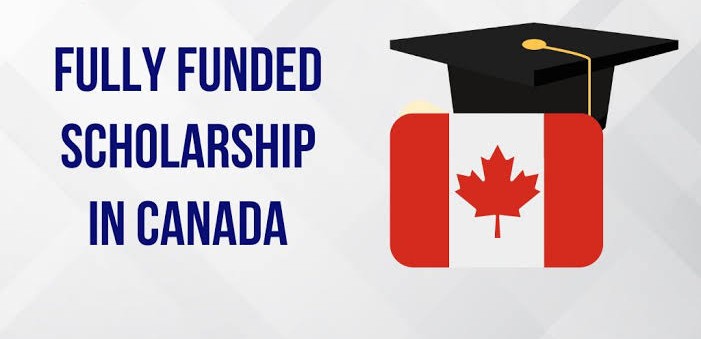Canada is home to a globally respected education system, with many universities offering competitive and research-driven graduate programs. Thousands of students—both domestic and international—pursue master’s and doctoral studies in Canadian institutions every year.
However, with the increasing cost of education, funding support has become a major factor for students considering graduate studies. Fortunately, Canada offers a wide range of funding opportunities, from government scholarships to research grants and institutional aid.
As of July 2025, the Canadian government, universities, and private organizations have broadened their financial assistance programs to promote graduate-level research, innovation, and workforce development.
Federal Government Scholarships
The federal government is the largest source of funding for graduate students in Canada. Through agencies like the Natural Sciences and Engineering Research Council (NSERC), Social Sciences and Humanities Research Council (SSHRC), and Canadian Institutes of Health Research (CIHR), Canada supports thousands of master’s and PhD students annually.
Programs such as the Canada Graduate Scholarships – Master’s (CGS-M) offer up to CAD 17,500 for one year. Meanwhile, the Canada Graduate Scholarships – Doctoral (CGS-D) provides CAD 35,000 annually for up to three years.
In 2025, these programs continue to prioritize equity, diversity, and inclusion. Special efforts have been made to support applicants from underrepresented communities and those conducting research in emerging areas like climate science, AI ethics, and public health.
The Vanier Canada Graduate Scholarships
One of the most prestigious awards for doctoral students is the Vanier Canada Graduate Scholarship. This scholarship, valued at CAD 50,000 per year for three years, is aimed at attracting top-tier doctoral candidates from Canada and abroad.
The Vanier program evaluates candidates based on academic excellence, research potential, and leadership skills. Applicants must be nominated by their institution, making it a competitive and highly selective process.
As of July 2025, the Vanier program has expanded to include additional awards for interdisciplinary research and has introduced new evaluation criteria to recognize social impact and community engagement.
Tri-Council and Joint Funding
The Tri-Council refers to NSERC, SSHRC, and CIHR collectively. Beyond individual awards, they also offer joint funding for collaborative research projects, interdisciplinary programs, and community-based initiatives.
For example, graduate students involved in multi-university or international research teams may be eligible for special joint grants. These can help cover travel, conference participation, and research-related expenses.
In 2025, more emphasis is placed on cross-sector collaboration. Graduate students working on projects with industrial or non-profit partners can now access dedicated Tri-Council funding streams that encourage applied and socially relevant research.
Provincial and Territorial Awards
Each province and territory in Canada provides funding opportunities tailored to local academic and economic priorities. These awards are often administered in partnership with universities or regional research councils.
Ontario offers the Ontario Graduate Scholarship (OGS), which provides up to CAD 15,000 per year. Alberta has the Graduate Excellence Scholarship, and Quebec offers the Fonds de recherche du Québec (FRQ) for students studying in French or contributing to provincial research goals.
As of 2025, several provinces have introduced scholarships focused on priority areas like Indigenous reconciliation, sustainable development, and health equity. These programs not only support research but also build regional expertise.
Institutional Scholarships and Assistantships
Most Canadian universities offer internal scholarships, fellowships, and graduate assistantships to their students. These include entrance scholarships, thesis completion awards, and departmental funding based on academic performance.
Graduate assistantships—both teaching and research—are a major source of funding. Students are paid to support faculty with lectures, grading, or research tasks, which provides both income and practical experience.
In 2025, many institutions have adopted transparent online portals where graduate students can browse and apply for available funding. These systems often allow students to apply for multiple opportunities with a single application.
International Student Funding
Canada has become a leading destination for international graduate students, and institutions are responding by increasing financial support for this group. Many universities offer entrance scholarships, tuition waivers, or research stipends specifically for international applicants.
Programs like the International Development Research Centre (IDRC) support students from developing countries who pursue studies related to global development, climate resilience, or food security.
As of July 2025, new federal initiatives have been launched to attract international students in strategic fields such as data science, renewable energy, and public health. These scholarships include mentorship and work placement options to enhance long-term career pathways.
Industry and Private Sector Scholarships
The private sector also plays an important role in funding graduate education in Canada. Corporations, industry associations, and foundations sponsor graduate students working on topics aligned with their business interests.
For example, the Mitacs Accelerate and Mitacs Elevate programs match students with industry partners for paid research internships. These experiences provide valuable industry exposure while supporting academic advancement.
In 2025, tech companies and green energy firms have become major contributors to graduate research funding, often offering awards that combine cash support with access to labs, equipment, and professional mentorship.
Scholarships for Underrepresented Groups
To promote equity in academia, several scholarships are dedicated to supporting women, Indigenous students, racialized communities, persons with disabilities, and 2SLGBTQ+ individuals.
Programs like the Indigenous Graduate Scholarship and the Women in STEM Fellowship aim to reduce systemic barriers and support diverse leadership in research and academia.
In 2025, new inclusion-based grants have been launched by both public and private sectors, focusing on intersectional identity and community impact. These awards not only provide financial aid but also support networks, advocacy training, and professional development.
Additional Funding Avenues
Graduate students can also pursue funding through professional organizations, research chairs, and international programs. Groups such as Engineers Canada, the Canadian Nurses Foundation, and the Canadian Bar Association all offer targeted scholarships.
Some students seek funding from international bodies like Fulbright Canada, the Commonwealth Scholarship Commission, or the World Bank. These awards are particularly helpful for joint degrees or international research collaborations.
Crowdfunding, alumni networks, and philanthropy are also growing sources of support. In 2025, platforms like FundMyGrad and GoResearch have made it easier for students to raise money for unique research projects or fieldwork.
Conclusion: Planning for Funding Success
Securing funding for graduate studies in Canada requires research, preparation, and persistence. With a wide range of federal, provincial, institutional, and private options, students have many pathways to reduce the financial burden of their education.
By starting early, maintaining strong academic records, and tailoring applications to each program’s priorities, students can significantly improve their chances of receiving support.
As of July 2025, Canada remains committed to making graduate education accessible, inclusive, and research-focused. With continuous investment and innovation in funding models, the country is empowering a new generation of researchers and leaders to shape the future.




Good